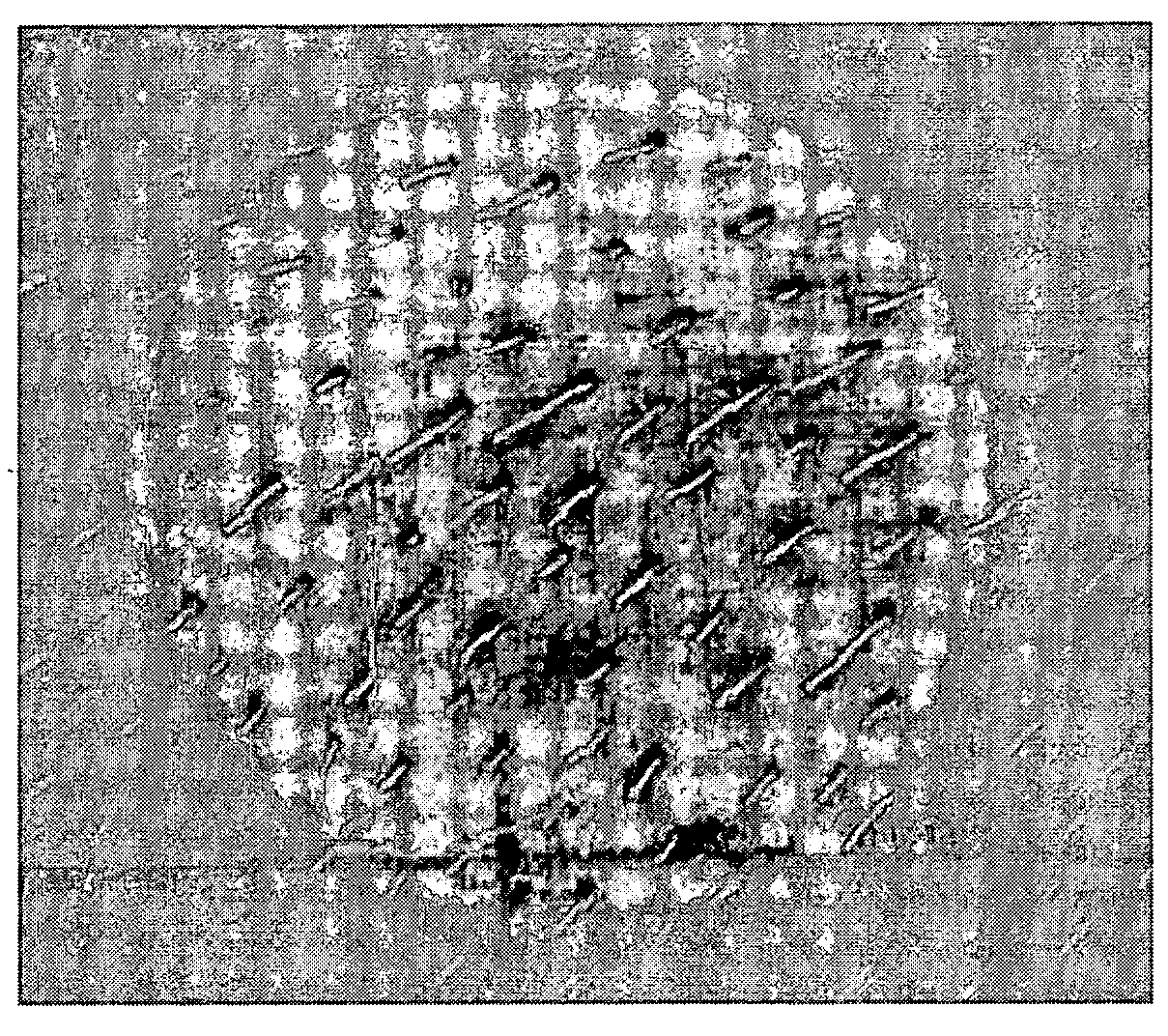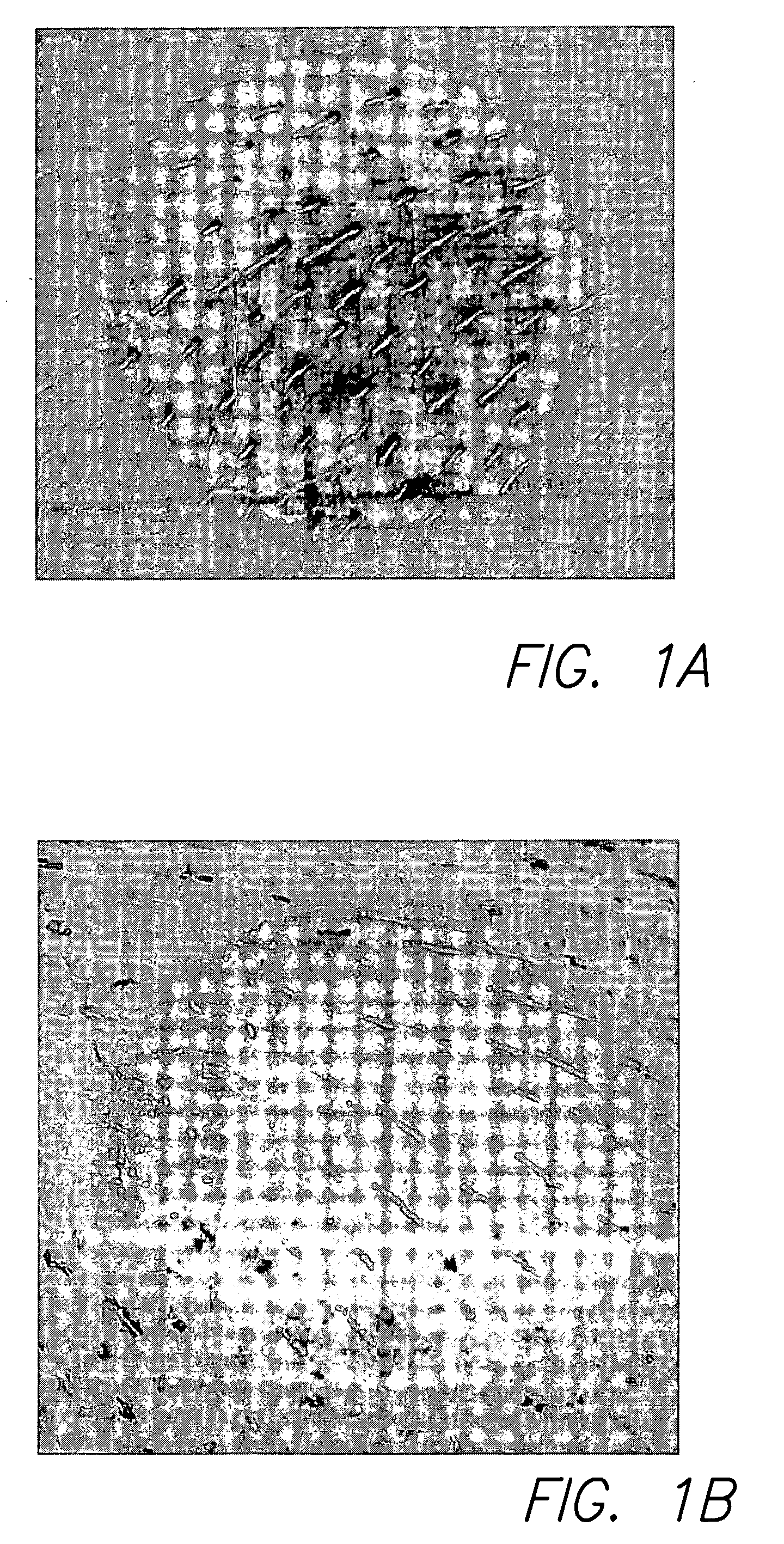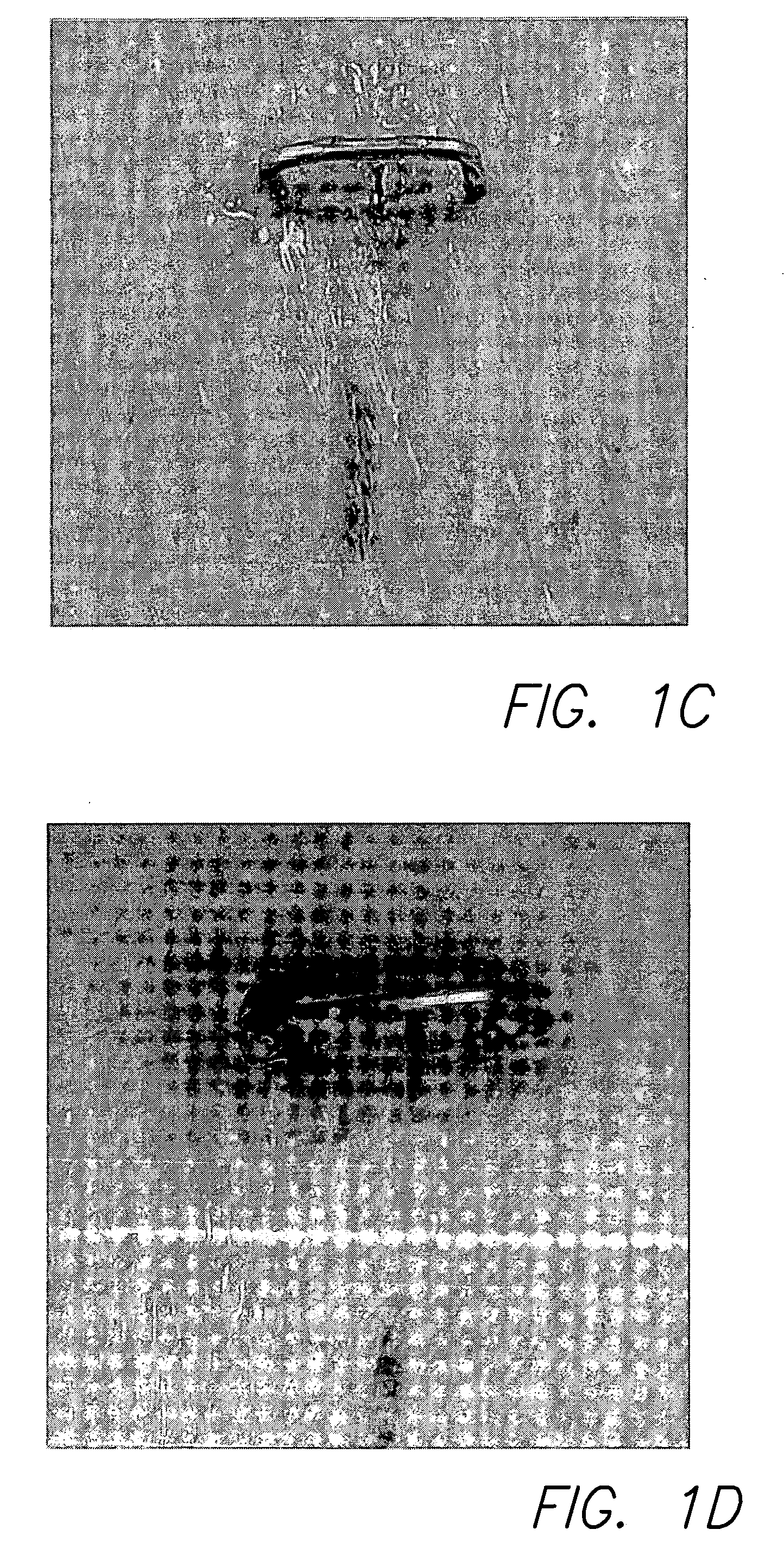Polycationic antimicrobial therapeutic
a technology of polycationic antimicrobials and antimicrobial drugs, applied in the field of antimicrobial prophylaxis and therapy, can solve the problems of lethal action of microorganisms, and achieve the effects of enhancing remanence or substantivity, reducing or cure the infection
- Summary
- Abstract
- Description
- Claims
- Application Information
AI Technical Summary
Benefits of technology
Problems solved by technology
Method used
Image
Examples
example 1
Aqueous PHMB-AgI Solution
[0054] A. 20 g of Cosmocil CQ (Zeneca, Biocides, Wilmington, Del.) 4 g of silver iodide (AgI) 2 g of potassium iodide (KI) and 80 ml of N,N-dimethylformamide (DMF) were mixed together in a flask for 15 minutes. The volume of obtained solution (light yellow color) was adjusted with DMF to 100 ml. The resulting solution contained 10% (w / v) of solids. Prior to application, stock solution was 10-fold diluted with 1:1 (v / v) mixture of DMF and ethanol to a final solids content of 1% (w / v).
[0055] B. 20 g of Cosmocil CQ, 2.8 g of sodium dodecyl sulfate (SDS), 1.3 g of AgI, 0.4 g of KI and 25 ml of DMF, 20 ml N-methyl-2-pyrrolidone (NMP) and 20 ml of ethanol were mixed together in a flask for 30 minutes. The volume of obtained stock solution (yellow-brown color) was adjusted with ethanol to 100 ml. Prior to application, the stock solution was diluted with 70% (v / v) aqueous ethanol to a solids content of 0.5% (w / v).
[0056] C. 5 g PHMB 20% soln [0057] 0.027 g silver ...
example 2
Treatment of Pig Wounds
A. Purpose
[0069] The purpose of this experiment was to test the prophylactic antibacterial efficacy of Neosil™ as an aqueous non-viscous solution and a gel.
Aqueous versionPHMB1.000%Ethanol5.000%PVP K300.536%potassium0.057%iodidesilver nitrate0.027%Glycerin0.500%Water92.880%Total100.000%pH7.00Osmolality280.00Gel versionPHMB1.000%Ethanol5.000%PVP K300.536%potassium0.057%iodidesilver nitrate0.027%Glycerin2.531%K4M2.024%Water88.826%Total100.000%pH7Osmolality280
[0070] The activity was compared to Bactroban (mupirocin), Polysporin, and vehicle controls. Pigs were chosen as the animal type to be used because of the similarity of pig skin to human skin, and because the porcine skin model is used in biomedical research in this area.
B. Pretreatment
[0071] Pigs were sedated and anesthetized following testing facility standard operating procedures. The pigs were then intubated endotracheally and maintained under a surgical plane of anesthesia with isoflurane 0.5-2....
example 3
Oral Antiseptic with Mice
A. Materials and Methods.
Mice.
[0080] Five-week-old female CD-1 mice were purchased from Charles River Laboratories. Mice were placed in cages in groups of five. To immunosuppress the mice and allow for the establishment of mucosal infection, 5-FU was given intravenously once every 7 days, starting on day-2. Antibiotics were given in the drinking water in autoclaved bottles to reduce potential confounding secondary bacterial infections. Gentamycin at 0.2 mg / ml, clindamycin at 1 mg / ml, vancomycin 1 mg / ml were added to sterile drinking water. Bottles and drinking water were changed every day. Imipenem is given at 5 mg / mouse (IP, QD). Antibiotics were begun on day-3.
Inoculum Preparation.
[0081]C. albicans #5 was transferred from storage at −80° C. and streaked for isolation on Sabouraud Dextrose Agar plates with chloramphenicol. The plates were incubated at 35° C. for 48 hours. The organisms were inoculated in sterile bottles each containing 100 ml of SAA...
PUM
| Property | Measurement | Unit |
|---|---|---|
| Fraction | aaaaa | aaaaa |
| Percent by mass | aaaaa | aaaaa |
| Percent by mass | aaaaa | aaaaa |
Abstract
Description
Claims
Application Information
 Login to View More
Login to View More - Generate Ideas
- Intellectual Property
- Life Sciences
- Materials
- Tech Scout
- Unparalleled Data Quality
- Higher Quality Content
- 60% Fewer Hallucinations
Browse by: Latest US Patents, China's latest patents, Technical Efficacy Thesaurus, Application Domain, Technology Topic, Popular Technical Reports.
© 2025 PatSnap. All rights reserved.Legal|Privacy policy|Modern Slavery Act Transparency Statement|Sitemap|About US| Contact US: help@patsnap.com



